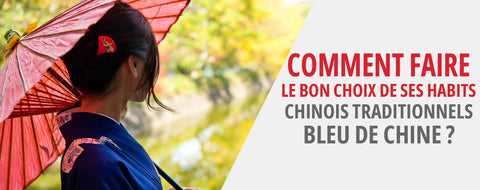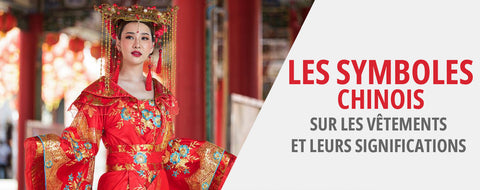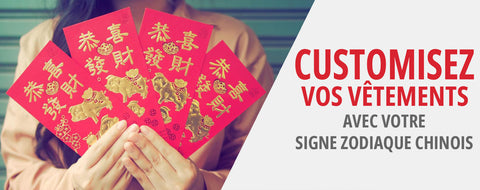
History and Meaning of Chinese Lanterns
reading - words
Chinese Lanterns perfectly embody the culture of China, discover through this article their History and their Meaning, but also the different types of lanterns and their uses.
History of Chinese Lanterns
Chinese lanterns first appeared during the Han Dynasty, and more precisely during the Eastern Han Dynasty (25-220). Historians believe that they were mainly used as lamps, well before the invention of electricity or the use of gas. To make them, several different craft techniques, such as painting, paper cutting, or sewing. The materials used varied and included bamboo, wood, wheat straw, or metal. However, the most common materials were paper and silk.

Then the monks began to light lanterns to dedicate a worship of Buddha, especially on the twelfth day of the first month of the lunar calendar. And so it was during the Eastern Han Dynasty that Emperor Liu Zhuang, who was a Buddhist, ordered the Chinese to use lanterns in turn to imitate the monks, and thus popularized Chinese lanterns. Later, during the Tang Dynasty (618-907), the Chinese made and lit lanterns to show their gratitude in the face of the happy life they led. These illuminations then symbolized the strength, power and prosperity of China.
Finally, historians have also concluded that Chinese lanterns were used during wars, as a means of communication to transmit secret messages or signal an intruder.
Ancient Types of Chinese Lanterns
In the past, the types of lanterns were quite varied. In particular, there were the royal lanterns, which, as their name suggests, were generally used for lighting purposes in castles and palaces. They are known to evoke a very delicate Chinese know-how.

Lanterns were also used to make shadows, usually for entertainment purposes. These lanterns were similar in shape to the royal lanterns, except that they were covered with not one, but two layers of paper or silk. Then, additional paper cuts were glued into the inner layer, so that when lit, they would create shadows. The heat caused the paper to rotate, causing the shadows to spin and move across the walls.
Modern Chinese Lanterns
Nowadays, more and more types of lanterns are available. There is always a wide variety of lanterns in a traditional style: paper lanterns, candle lanterns, gauze lanterns, tissue paper lanterns, or rice paper lanterns... But technology is sometimes also used, and traditional candles are sometimes replaced by LED bulbs. We therefore find electric lanterns, sometimes with multi-colored light, and even musical lanterns. The very shape of Chinese lanterns has evolved a lot and diversified. Thus, we find them in the shape of animals, cartoon characters, signs of the Chinese zodiac or flowers such as the sacred lotus. In addition, lanterns evolve over time, and we find more and more fully biodegradable lanterns, with a vegetable wax burner, or other sky lanterns designed to descend gently when the burner has gone out.

Use of Chinese Lanterns
Generally speaking, the Chinese use lanterns in three ways: the most common is hang the lantern. In remote areas, you can even find hanging lanterns that adorn street lamps. These hanging lanterns, often decorated with pompoms, are not always bright and are often hung in front of shops as good luck charms, or decoratively in front of houses.
Flying lanterns, also called sky lanterns, are particularly popular during the Spring Festival, celebrated during the first full moon of the Chinese calendar. They are then released into the sky by the thousands, propelled by hot air, like hot air balloons. This Asian lantern is not only the trappings of China, and there is also a wide variety of Thai flying lanterns.
Finally, the floating lanterns, equipped with waterproof burners, are notably used during the Dragon Boat Festival, where they are placed on rivers and lakes during the celebrations. Each one then creates a luminous reflection on the water, for a totally magical atmosphere.

Very festive, the Chinese lantern is generally used during celebrations and parties. Chinese families like to light them up during the Chinese New Year or any other celebration where everyone releases their lantern (Discover the festivals and celebrations in China).
The Chinese New Year ends on the fifteenth day of the first lunar month with the Spring Festival, also known as the Lantern Festival. On this day, thousands of paper lanterns are released throughout the country, in a very romantic and poetic aerial spectacle. Families then light up hundreds of lanterns, often with riddles written in calligraphy, which children enjoy solving. If they succeed, they are rewarded with small gifts or sweets. It is also customary for uncles to buy lanterns for their nephews, if they are under twelve years old, before the festival. This shows that they wish their nephew the best, and in particular that they are in excellent health for the coming year.
In China, apart from national celebrations, lanterns are also common at weddings, birth ceremonies, or any other event where one wants to bring good fortune. It is then customary to hang lanterns in front of one's house or in the wedding hall, as decorations and lucky charms.
In the West, Asian lanterns have won over people with their festive and decorative side. The sky lantern, in particular, is very popular for a wedding or a birthday party and will impress the guests. Lantern garlands or lights, then in the shape of rounder balls than traditional lanterns, are also very common in Western homes.
Meaning of Chinese Lanterns
Generally speaking, Chinese lanterns symbolize the vitality, THE social status, and especially the good fortune. They come in a multitude of colors. red lanterns are the most popular, because in China, the color red is a sign of good luck and happiness. In Chinese culture, red is also a symbol of vitality and energy. Conversely, using a blue lantern means that a family member is sick, because in Chinese culture, blue is a symbol of illness and low energy. White lanterns, on the other hand, represent death and mourning. A white lantern at the entrance of a house will then show that a death has occurred in the family, and announce a mourning. Finally, purple will tend to bring bad luck, and is a rather rare lantern color. The material is of little importance, whether you use a paper or silk lantern depends on each person's taste.





